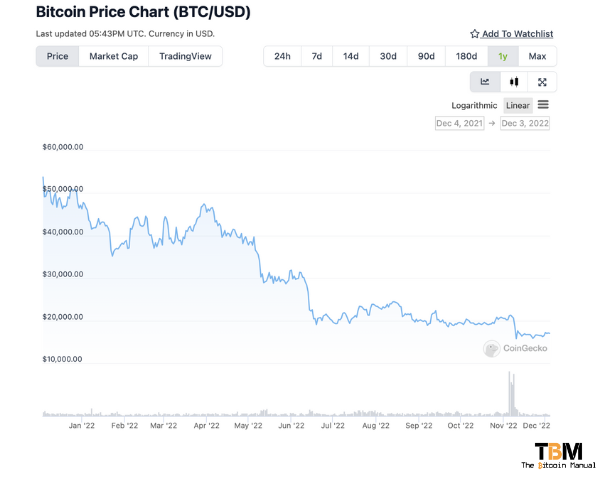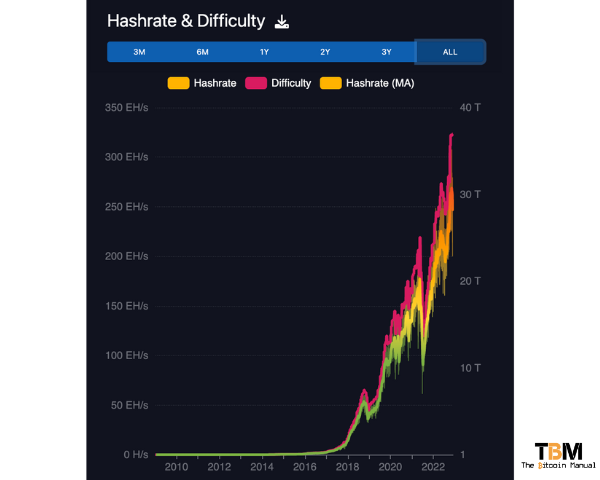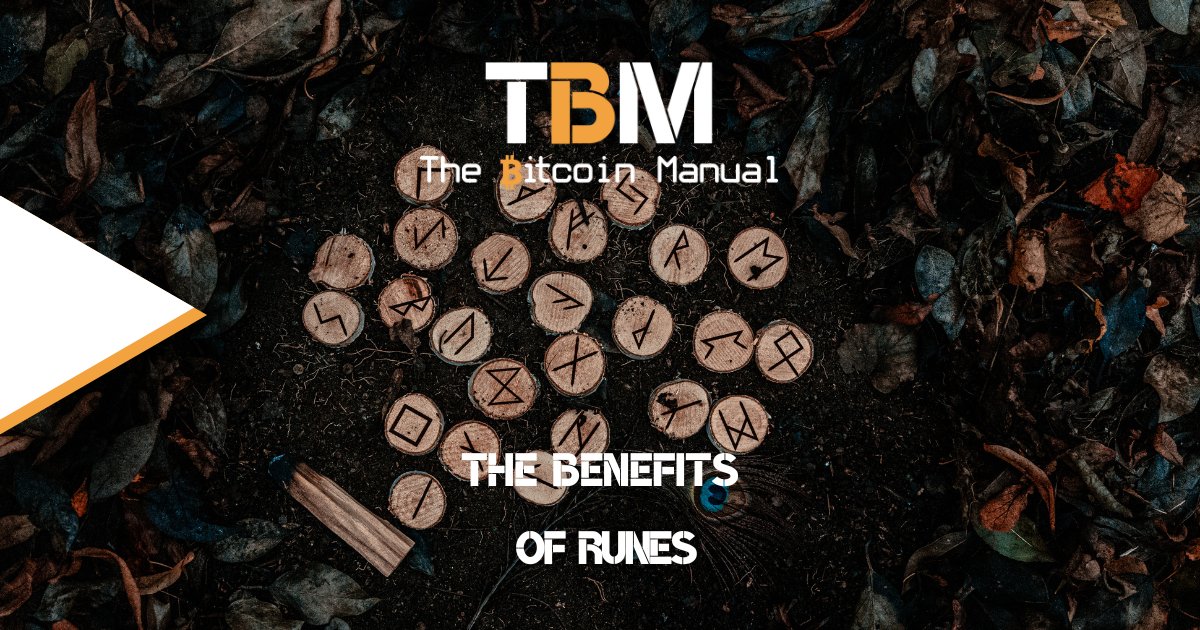The bitcoin mining business is not a get-rich-quick scheme that involves plugging in a magic money printer machine; it’s a worldwide competition to provide security for the network and, in return, hope to secure a reward for your contribution. It’s a race against time every 10 minutes and is ruthlessly capitalistic, with no bailouts; if you make a mistake, you pay for it economically.
Miners are incentivised to keep costs as low as possible while trying to provide as much hash rate as possible for as long as possible. If they can achieve this, the odds of securing more bitcoin are higher, but this balancing act is easier said than done.
Like most commodity sectors, the bitcoin mining industry is capital-intensive and inherently cyclical. The bitcoin mining industry has gone through bull and bear cycles several times before. Still, the current bear market is unique due to the scale of the mining sector and the capital behind participants. This bear market is predicted to be the toughest in history for industrial-scale mining.
As the bear market takes down miners, we see countless stories of failures, bankruptcies and liquidations, but why exactly do bitcoin mining operations fail?
Let’s talk a look.
The bitcoin price falls, and with it, decreases miner revenue.
Miners’ primary job is to secure the cheapest energy and arbitrage that into the hash rate that will net them bitcoin. Making a spread between their bitcoin production revenue and the energy expenses, labour and maintenance costs required to produce the bitcoin. Since miner expenses are in fiat, they need to sell bitcoin at current market rates to secure a runway to cover operations.
A falling bitcoin price puts downward pressure on revenues and narrows miners’ gross margins. In addition, many miners that have built up bitcoin holdings will tap into their treasury to keep the lights on.
If the value of bitcoin continues to fall along with their sell pressure in value, it becomes harder to remain profitable, and once you can’t pay your energy bills, you either need to scale down your operations or, worse, pull the plug.

The competition for bitcoin increases
While bitcoin trading prices can pressure mining operations, it is not the only variable miners need to consider when factoring in if a miner can continue to operate. The competition in the bitcoin mining industry continues to increase each year significantly.
The favourable mining economics that miners might have enjoyed during their earlier years might not continue into the future as new miners are incentivised to join the race while other mining operations opt to ramp up capacity.
It takes time to build mining infrastructure, which creates a lag between the cyclical markets and new mining capacity coming online. As new hash rate comes online that is not your hash rate, your current production of hash rate gets diluted and with it, your likelihood of securing bitcoin by finding the next block.
Suppose the competition reaches a point where the intervals in which your mining operation secures bitcoin get wider and wider, yet your expenses continue to remain the same or increase. In that case, the inevitable losses begin to eat into your cash flow.
If the losses become too great, those miners will be squeezed out of the competition.

Electricity prices have increased
The world’s government’s push towards renewables has seen plenty of energy production taken offline to meet ESG goals. Couple that with supply chain issues and geopolitical unrest, and you have the recipe for a commodity and energy bull market due to shortages putting pressure on current supply. Energy production is rather inelastic, and it takes years to bring new supply online.
During this lag, energy prices can be volatile.
Considering the fact that bitcoin miners live and die by the cost and access to electricity, price spikes in their primary expense can put miners out of business.
Older mining equipment cannot compete.
To mine bitcoin, you need to have ASIC miners, which are specialised computers designed to do computation that generates hash rate. As is the case with any computer, be that a laptop, smartphone or ASIC, the manufacturers improve their products each year. When new ASIC miners hit the market that can generate more hash power for less electricity, it starts to make the older ASICs less profitable.
If your operation is filled with ASICs that are slowly becoming obsolete, you will generate less bitcoin for the electricity you purchase, and if the bitcoin you can secure doesn’t cover your expenses, you’re forced to close up shop.
A mismatch of liabilities and free cash flow
As the bitcoin price runs during a bull run, miners may feel confident that these prices would allow them to fund mining on leverage. Miners then use this additional revenue secure funding to scale up operations and can take out substantial loans.
Instead of spending bitcoin, they used their mining equipment and bitcoin holdings as collateral to acquire high-interest loans with as little as a 30% LTV (loan-to-value) ratio. This type of financing adds to pressure from two different directions.
First, with much of their equipment locked as collateral, it is difficult for miners to scale production down when profitability is low.
Second, the loan payments increase costs in a way that amplifies the unprofitability.
So if prices decline miners struggle to service their loans, and if lenders won’t refinance, the miners could be forced to liquidate their bitcoin and hand over their machines to the bond holds.
If there are a lot of miners who find themselves in this situation, it could theoretically trigger miner capitulation.
Government regulation
Bitcoin miners of a certain size are rather immobile and tethered to a certain energy source, making them easy targets for government regulation. In China, we saw a massive exodus of bitcoin miners after the government declared a nationwide ban on the practice.
China was once the world’s biggest bitcoin mining hub, accounting for up to 55%% of the total “hash rate” of the bitcoin network. But the country’s share of global bitcoin mining capacity plummeted to zero in July and August 2021, according to Cambridge University data, after authorities launched a fresh crackdown on bitcoin.
The crackdown resulted in several miners fleeing to other countries, including the U.S. and Kazakhstan, which borders China. Some miners might not have had the funds to handle the migration, and in this case, they would have to shut down.
While others had to learn up operations and turn to more mobile mining operations that could be conducted incognito despite Beijing’s ban on the practice.
Are you investing in the bitcoin ecosystem?
Do you invest in bitcoin mining? Are you considering bitcoin mining? Have you been mining for some time? Let us know in the comments down below.




